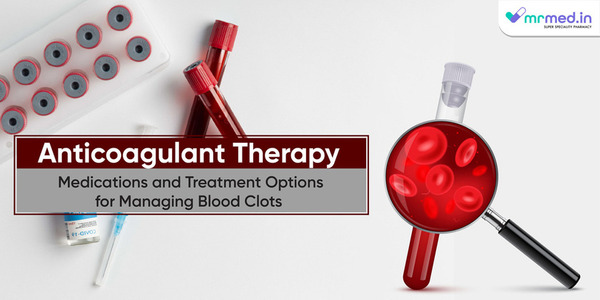Anticoagulant Therapy
Anticoagulant medications work by inhibiting the body's natural clotting process, preventing the formation of new blood clots, and stabilizing existing clots. Usually, anticoagulation therapy is started with low molecular weight heparin for 5-10 days intravenously and later switched on to oral anticoagulants for a prolonged period. In some cases, this can be bypassed by starting with oral anticoagulants, depending upon severity.
1. Heparin
Unfractionated heparin is always started as an initial therapy for DVT. It is usually given subcutaneously or intravenously by a healthcare provider. Unfractionated heparin is preferred over low molecular weight heparins in hospitalized patients and individuals with renal failure or renal insufficiency.
2. Low-molecular-weight heparins (LMWH)
These are also administered by injection and are frequently used for long-term management. Since low molecular weight heparins (LMWHs) can be administered as an outpatient, enoxaparin, dalteparin, and tinzaparin are among the preferred initial therapies.
Clexane 60mg Injection contains the active ingredient enoxaparin. This medication prevents deep vein thrombosis in patients who have significant movement restrictions, hip and knee replacements, and abdominal surgeries. For patients with non-Q wave myocardial infarction and unstable angina, this injection stops further heart problems.
3. Oral anticoagulants
They are widely used for long-term treatment, usually after the initial therapy started with heparins. During the transition period, they can be used alone or with injectable anticoagulants. Certain medications of this class include warfarin, dabigatran, rivaroxaban, apixaban, and edoxaban.
After diagnosis, apixaban and rivaroxaban can be begun as monotherapy immediately, or they can be used whenever there is a break from injectable heparin without causing side effects. An initial 5 to 7-day course of therapy with LMWH or Unfractionated heparin is necessary before starting edoxaban. Similarly, only after the initial five days of LMWH medication is dabigatran administered.
4. Thrombolytic Therapy
In some cases of extensive DVT or when there is a high risk of complications, thrombolytic therapy may be considered. Thrombolytics belong to the medications that dissolve blood clots and are administered intravenously in a hospital setting. This treatment is reserved for severe cases due to the increased risk of bleeding complications.
Other treatment options for managing blood clots
Inferior Vena Cava (IVC) filter:
It is a small cone-shaped medical device inserted into the inferior vena cava that stops the passage of blood clots to other organs, such as the lungs, preventing further complications. It is mostly employed in cases where the patients cannot take oral anticoagulants due to the risk of bleeding. It is an invasive procedure often carried out by administering local anesthesia.
Compression stockings:
These compression stockings are useful in alleviating the swelling around your legs. They work by giving the highest compression and pressure at your ankle that gradually loosens near the knee. This pressure prevents the blood from accumulating in veins and relieves pain and swelling.
Side effects of anticoagulant medications
- Bleeding: The possibility of internal bleeding (such as gastrointestinal bleeding) and bleeding into the skin or other tissues is one of the most important adverse effects associated with oral anticoagulants.
- Bruising: Due to their potential to interfere with the blood's natural clotting process, oral anticoagulants may cause bruises more likely. Greater bruises may occur as a result of little trauma or injuries.
- Symptoms related to the stomach: When taking oral anticoagulants, some people may have gastrointestinal side effects, including nausea, vomiting, diarrhea, or stomach discomfort. These symptoms usually improve with time.
Managing blood clots:
- Encourage early mobilization after surgery or prolonged periods of immobility to prevent blood stagnation in the veins.
- Use graduated compression stockings to improve blood flow
- You are advised to quit smoking because it will increase the risks of blood clotting and make you more prone to complications.
- Maintaining a healthy weight will reduce the stress on your limbs, which helps prevent obesity-related venous thromboembolism.
- Patients should drink plenty of water because dehydration can thicken blood and raise the risk of blood clots. Sufficient hydration promotes normal blood circulation and viscosity.
- Supportive measures, such as pain management, leg elevation, and mobility exercises, can help alleviate symptoms and improve patient comfort.
- To stay healthy, you should engage in regular physical activities such as walking, cycling, or swimming, depending on your preference. These activities promote blood flow and reduce the risk of clotting.
Conclusion
Patients taking anticoagulant therapy must follow their prescribed course of action and schedule frequent follow-up consultations to monitor and adjust their doses as necessary. Patients should also be informed about the warning signs and symptoms of bleeding issues and when to get help from a doctor.




